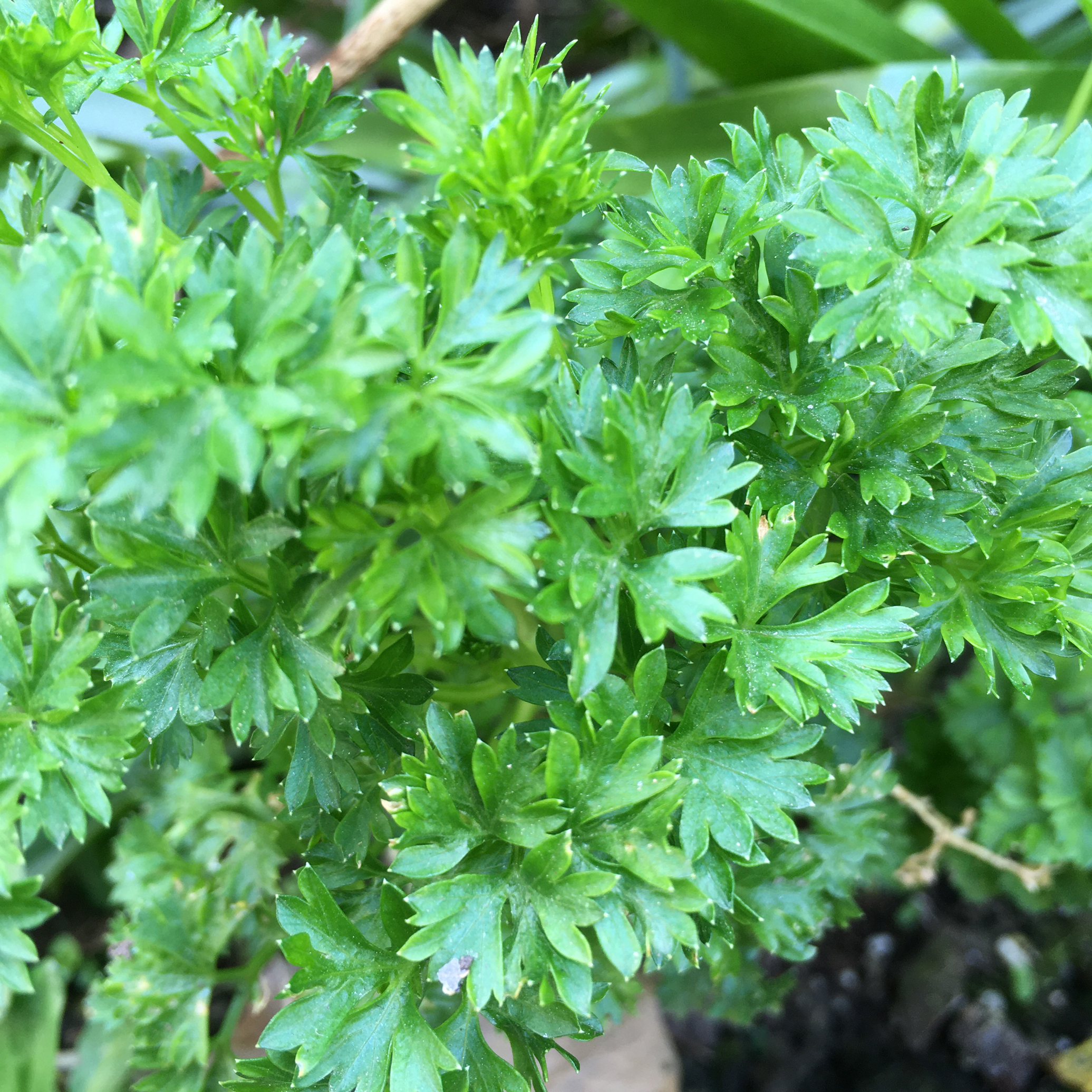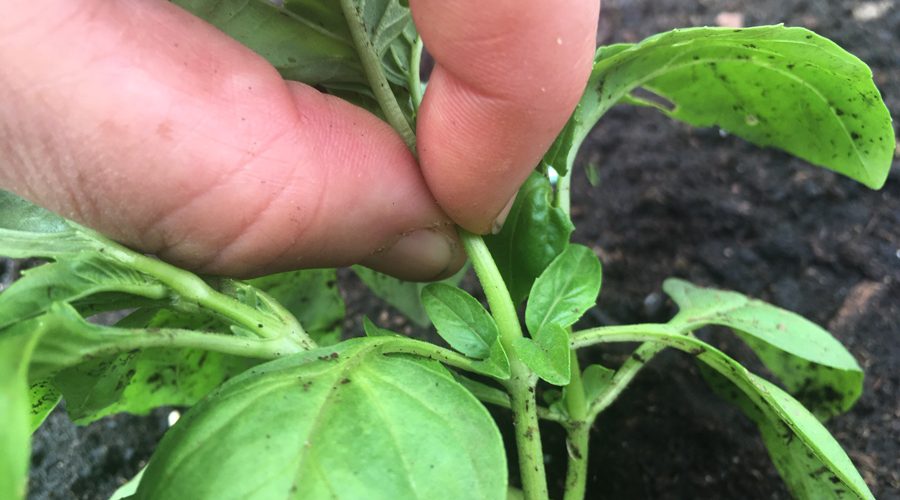These three herb plants are consistently the most popular from our range. In this article, we look at how to get the best results from each one, keeping them nice and leafy for longer.
Basil
- Basil likes the heat! It is best grown in a greenhouse or polytunnel, or on a sunny windowsill. If you prefer to grow it outside, choose a sunny, warm and sheltered spot.
- Fertile soil is key – pots filled with fresh compost are ideal, or you could plant into a growbag.
- Keep the soil a little moist, but don’t overwater as the stems tend to rot if the soil is too soggy for long
- We find it is better to stand pots in a tray of water so that the water is soaked up from the bottom. If this isn’t possible, the best time to water them from above is at noon in bright sunshine (quite the opposite from most plants!)
- As plants grow you will see small pairs of leaves on the lower sections of the stems. To encourage bushy growth, pinch stems off to a pair of these baby leaves. Also pinch off like this if you see any flower buds appearing – this will keep the plant producing leaves for longer.
Coriander
- Coriander is prone to bolting during the summer, so it is a really good idea to plant it in a cool, shady spot that gets a little morning sun.
- Pots work well, but make sure they are deep pots as coriander likes to put down good roots. A raised bed would be good as well.
- Make sure coriander is planted in fertile soil. Once planted, we would recommend mulching so that the soi can retain moisture. Again, this will help to prevent early bolting.
- Harvest regularly, even if you choose not to use the leaves, as this will keep the plant leafy for longer.

Parsley
- Parsley will do well in pots of compost or in the ground in rich fertile soil
- It can be grown in full sun but we’d recommend planting in partial shade as this will help it to stay nice and cool, and leafier as a result.
- Cut back regularly to keep the plants leafy during the summer – as you cut stalks, new ones will grow through at the base.
- Plants will die back over winter and grow again in spring – however the growth in the second year will be different – the leaves will be smaller and stalks will be tougher as the plant is now pushing to re-seed. For this reason, many gardeners treat parsley as an annual.

